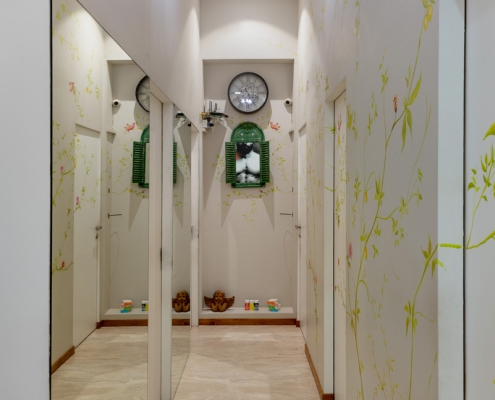Role of Hormones in Your Body
Not just your mood swings, bloating, and PMS; hormones play with your skin and hair too
Once you cross the age of 30, you will notice many changes in your body—especially your skin and hair. This is impacted by the changing state of the hormones in your body. Having a full understanding of how hormones—and the lack of them—affect your skin is important if you want to maintain great skin and hair.
Hormones are chemical messengers that are produced in organs such as the ovaries, adrenal glands, and thyroid glands. Sex steroid hormones, thyroid and growth hormones are involved in many different functions such as growth, immune, reproductive and metabolic functions, and even hunger and stress. Many factors are involved in intrinsic skin ageing like genetic mutations, increased inflammatory signals, decreased lipid production, and decreased hormone levels.
One of the most important factors involved in the initiation of your ageing process is the endocrine system.
The endocrine system produces and regulates hormones. It is important for you to have a healthy endocrine system because for women its decline, sometimes drastically, with age, can impact you severely. This is simply because it directly impacts the state of hormones in your body.
As a result, you might start noticing dryness, fine lines and pale skin, and thinning of hair. Now, let us closely monitor the hormonal changes since we have learnt how important they are for healthy skin, especially for women. Here are some hormones that you need know about to understand how they affect your skin and hair as you grow older.
Oestrogen:
When it comes to popular hormones, oestrogen takes the prize. It is often called the hormone of beauty—it is responsible for the shape of your body and the state of your hair and skin. With progesterone, oestrogen controls the functions of your reproductive organs.
It is primarily made in the ovaries and also in different tissues outside of the ovaries. Oestrogen actually encompasses a group of chemically similar hormones, so it is not a single substance. Oestrogens include estradiol, the most abundant form in adult females; estriol, the primary oestrogen during pregnancy; and estrone, which is produced during menopause.
Oestrogens affect skin thickness, wrinkle formation, and skin moisture. Oestrogens can increase glycosami- noglycans (GAGs) such as Hyaluronic Acid. They can also increase collagen production in the skin, where they maintain epidermal thickness and allow the skin to re- main plump, hydrated, and wrinkle-free.
During periods of elevated hormonal activity, such as pregnancy or while on oral contraceptives, skin pigmentation is exacerbated in certain sun-exposed areas such as the forehead, nose, and cheeks. This phenomenon, known as melasma, is strictly hormone- related and is a clear example of hormonal effects on skin pigmentation.
Your skin is not the only external feature that benefits from oestrogens. Besides resulting in plump, healthy skin, oestrogens can also make hair grow long and healthy. So during pregnancy, you will experience hair growth which is thick and lustrous because the excess oestrogen in your body improves the stable phase of your hair or Anagen. However postpartum and during menopause, the drop in estrogenic levels cause thinning and falling hair, sometimes resulting in clinically significant hair loss, or the Telogen Effluvium.
In essence, oestrogens help our skin and hair remain youthful. Of course, during puberty, menstruation, and menopause, progesterone plays a key role. However, research is still going on in this field. Future research will hopefully shed some light on the interactions between oestrogens and progesterone and help us better understand these changes in our skin and hair.
Progesterone:
Progesterone is a hormone that stimulates and regulates various functions in our body. It plays a major role in maintaining healthy pregnancy in women. It regulates the monthly menstrual cycle and prepares your body for conception. This hormone is produced in the ovaries, placenta (the organ that helps transfer nourishment from a pregnant mother to the baby), and the adrenals. High progesterone levels can cause PMS in women; you will notice tenderness in your breasts, bloating, and even mood swings. It also impacts skin by tightening the connective tissues and it is also responsible for remodelling the collagen structure.
Testosterone:
Testosterone is the chief male sex hormone that defines all the masculine characteristics in a man. Coarser hair, thicker and oilier skin, and generally a later onset of signs of skin ageing are all due to testosterone. Female pattern alopecia or baldness, is attributed to increased androgen levels and is the most common cause of hair loss in women. Androgens are the hormones that lead to hair fall in genetically predisposed individuals.
With age, the oestrogen-androgen ratio becomes unbalanced, and changes are seen following menopause. Since androgens, and in particular testosterone, are involved in sebum production, females may experience increased oiliness or even adult acne when hormones become unbalanced during menstruation or menopause. Androgens affect both males and females and they can experience the effects of altered androgen levels.
Thyroid Hormones:
The thyroid is a small butterfly-shaped gland situated just in front of the voice box. The thyroid gland makes two thyroid hormones which affect metabolism, brain development, breathing, body temperature, muscle strength, bone health, skin dryness, menstrual cycles, weight, and cholesterol levels. Again, balance is key when it comes to these hormones. Too much of it and the skin can become warm, sweaty, and flushed. Too little of it can make the skin dry, coarse, thick and even reduce the sweating. Thyroid dysfunction can also lead to the thinning of hair and eventual hair loss.
DHEA (Dehydroepiandrosterone):
DHEA (dehydroepiandrosterone) is called the ‘mother hormone’ because it acts as a precursor to other hormones in the body such as oestrogen, progesterone, cortisone, androgen, and testosterone, to name a few. It is an important endogenous steroid hormone. It is naturally produced by the adrenal glands, the gonads, and the brain. Levels of DHEA naturally drop once you cross 30.
What happens when your hormones go haywire?
- The variations in your hormones can lead to discolouration of skin. The melanocytes, which are the basis of skin’s pigment, get affected with changes in pituitary hormones and thyroid hormones.
- Excessive male hormones in your body can affect the sebaceous glands and lead to adult acne.
- Also when DHEA and androsterones turn into testosterones, they become DHT or Dihydrotes- tosterones. DHT is responsible for increasing male pattern baldness in women. It constricts the roots and hurts the hair follicles leading to thin strands.
Unopposed increase in male hormones also leads to hair growth on the chin and the upper lip region. As oestrogen drops, your body starts to lose its capacity to absorb calcium.
When hormones start to retire their functions, various bodily functions like sexual desire, state of skin and hair, bone density, and physical and intellectual capabilities start to degrade.
The first sign that there is some hormonal change taking place in your body is that your sleep pattern gets disturbed, the release of melatonin—sleep hormones—get affected, and the rest follows. This also leads to decrease in the multiplication of epidermal cells, decrease in oil glands leading to dry skin, and often large pores. As the bone density starts to decrease, the structure of your face alters.
Menopause:
Menopause, as the name suggests, is the suspension of woman hormones for good. These days women attain menopause by the time they are 45, if not earlier. This is all thanks to the lifestyle, stress, food habits, pollution, and hormones in our daily lives.
What happens during menopause to your skin and hair?
The onslaught of menopause leads to low oestrogen levels, causing:
- Excessive drying of skin hydration and mucous membrane. So you get flaky, dry, sensitive and itchy skin, dry lips and vagina, dry nails with longitudinal ridges.
- Decreased collagen synthesis and increased destruction of its structure, leading to accelerated skin ageing.
- Decreased cell turnover and sloughing making the skin look dull and darker.
- Alteration in thermoregulation—hot flushes, redness on your face, or exacerbation of conditions like acne or rosacea.
- Melasma—pigmentation on your cheeks, forehead, nose, and upper lip.
- Unopposed action of male hormones—excessive hair on the chin, hair thinning, or hairfall.
- Fat resorption from the face—sagging of the soft tissue.
- Decreased calcium absorption, bone resorption, causes structural collapse of the face.
How to deal with this?
If you have been taking good care of your skin, by the time you hit 35, your skin will not go through major lows. You can up your moisturizer though and buy creams with special anti-ageing actives. You have to take special care of your skin with gentle treatment products. Since the body metabolism slows down, some stretching exercises to deal with spot weight gain can also help. You also need to workout to keep your joints and bones healthy. You can seek professional help to reduce fine lines, and moisturize your skin.
You could just be suffering from iron deficiency. Even if you are not anaemic and your haemoglobin is within normal limits, the elemental iron could be low. Check your serum ferritin and B12; Ferritin should be between 80 and 100. The cause for dark circles and hair fall could just be this and it is treatable.
Hair woes:
Thinning hair and hair fall is another problem that crops up as you hit menopause. Many of my patients come to me not for skin but hair woes. As you grow older, your hair starts to get dry and scanty. The texture gets fine and becomes more susceptible to breakage and of course it goes grey. None of that is complementary to our looks.
You can definitely start colouring your hair. Look for an ammonia-free colour which is much more gentle on the strands. Go easy on the blow dry. Avoid heavy-duty irons and dryers at the salon. Oiling your hair, especially a good scalp massage, is a good thing to being with if you have not been doing so. Do not forget take your daily supplements.
Dr Dhanu was one of the first doctors who supported me when I was still finding my way in the industry. She also happens to be my gynaecologist who took care of me during my pregnancy. Thank you for being a part of my journey and for all the yummy food.
Dr Dhanu’s gyan:
If you are 35 and your skin, mood, and body has already started to bother you much more than it did before, welcome to the ‘climacteric’ phase meaning pre- menopause,which leads to a slowdown of your ovaries. You must take special care of your skin, body, and bones now.
So what is menopause? It is the permanent cessation of ovarian activity along with cessation of menstruation. You confirm this with a simple blood test—check your levels of follicle stimulating hormone (FSH) which should be 20 and above. The average age of menopause is between 42 to 53 years.
The most important thing that turns your world around is oestrogen sinking.
Early effects of reduced oestrogen:
- Mood swings, depression due to increase in encephalins—the sad hormones and endorphins— that lower the happy hormones.
- Sex drive, i.e. libido decreases.
- Thermoregulatory system goes haywire causing hot flushes.
- Maldistribution of the fat. Your breast flattens, belly girth increases, and facial fat descends.
- Your basal metabolic rate (BMR) goes down. You realize that while your food intake hasn’t changed, the fat retained is lot more.
- Vaginal dryness as mucus membrane thins too.This means painful intercourse and repeated UTIs, also called UroGenital Syndrome.
- Stress incontinence wherein when you cough or lift weight, a little bit of your urine escapes.
As you start to notice the changes, try supplements that can help you. The popular ones are vitamin D3, calcium, primrose oil, and multivitamins that help you have an easy menopause.
The long-term effects:
- Alzheimer’s
- Cardiovascular changes
- Bone density changes leading to osteoporosis
- The National Osteoporosis Foundation recommends you take:
- 500mg of calcium once a day if you are 35 and above.
- At menopause and thereafter, 1000mg of calcium in a day.
- When you are 65 and above then 1500mg of calcium in a day along with exercise.
Dr Dhanu says that the WHO recommendation is that a doctor can give HRT only if the patient is symptomatic after all the investigations have been done and all the protocols have been met with.
Do phytoestrogens work?
No they don’t. Phytoestrogens are plant derivatives that many claim, if taken in form of supplements, act like oestrogens, but don’t fall for it. They are just placebos.













Leave a Reply
Want to join the discussion?Feel free to contribute!